gWaves | Mayday, Mayday, Mayday!
Team Updates
Why it matters to air travellers?
Exposures to ionizing radiation represent real health hazards to all air travellers. Prolonged ionizing radiation exposures may lead to biological effects such as: damage of immunization system, cancer, and hereditary effects. To reduce the risks of these biological effects, air travellers should monitor their radiation exposure and compare against the recommended exposure limit.The recommended occupational exposure limit for ionizing radiation is a 5-year average effective dose of 20 mSv per year, with no more than 50 mSv in a single year.
Some existing sources of ionizing radiation are:
* Galactic Cosmic Radiation. The ionizing radiation that originates outside the solar system, a main source of which is thought to be exploding stars (supernovae);
* Solar Cosmic Radiation. Ionizing radiation that originates from the Sun; the particles interact with air atoms in the same way as galactic cosmic radiation. Solar particle events, also sometimes called solar flares, will result in temporary increases in solar cosmic radiation levels, usually very small relative to the background rate from galactic cosmic radiation. On rare occasions it can be significantly greater than the galactic cosmic radiation dose rate. On rare occasions, a severe disturbance in the Sun will lead to a large increase in the amount of solar cosmic radiation that penetrates Earth’s magnetic field and enters the atmosphere, increasing the dose rate of ionizing radiation to air travelers. The period and amount of increase at any given time are difficult to predict accurately and may last from a few minutes to more than a day. The increase is greatest near the magnetic poles, where the Earth’s magnetic field provides the least shielding, and decreases rapidly as latitude decreases toward the geomagnetic equator.
What is ionizing radiation?Ionizing radiation refers to subatomic particles of matter (e.g., neutrons, protons, and electrons) and massless particles of energy (X-rays and gamma rays), with each particle having sufficient energy so that, on interacting with a material, it can cause an atom to lose an orbital electron. Low levels of ionizing radiation are a normal part of our environment. Substances that emit ionizing radiation are present in every cell in the body.
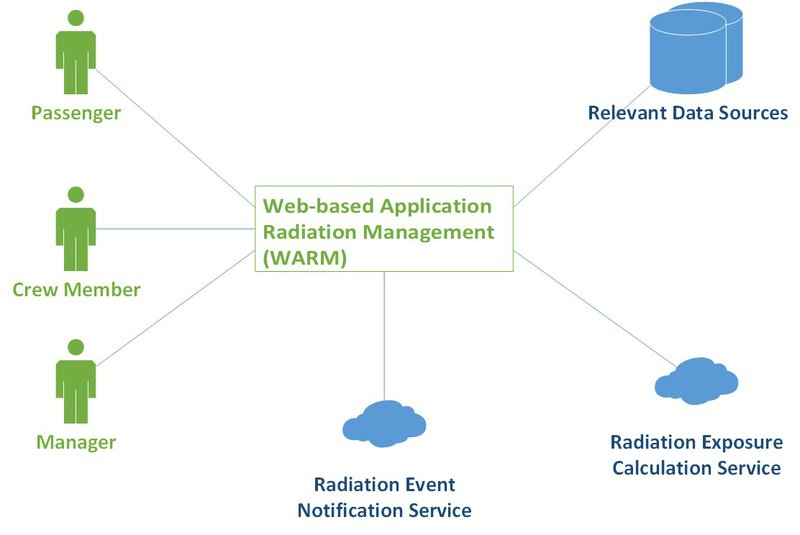
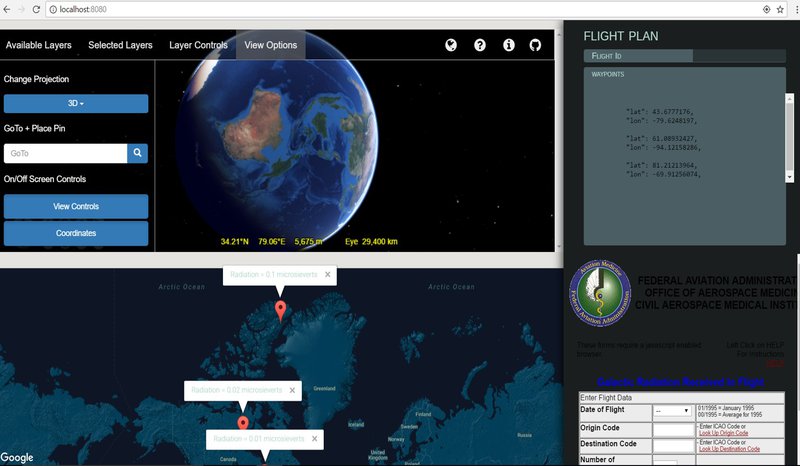
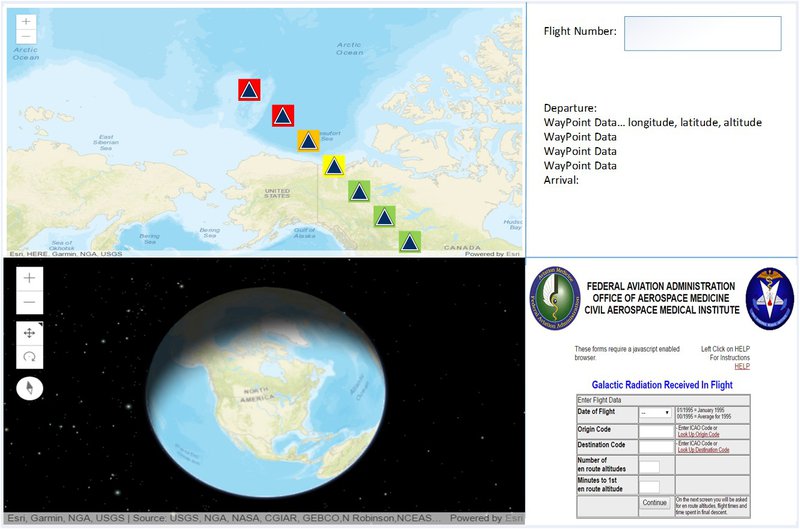
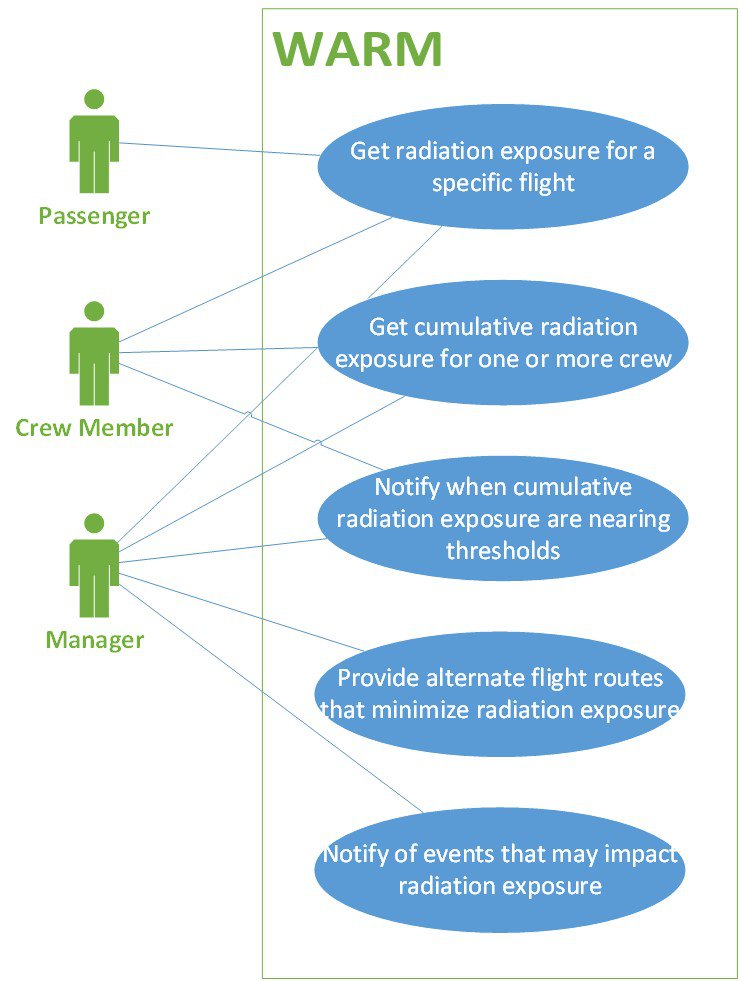
The Opportunity:
•Provide a simple web-based application that enables
–Flight passengers to monitor their individual ionizing radiation exposure dosage on a per flight and cumulative basis (year to date)
–Flight crew members to monitor their individual ionizing radiation exposure dosage on a per flight and cumulative basis (year to date, last 5 years)
–Managers to monitor ionizing radiation exposure dosage for all flight crew members within an establishment with the help of threshold notifications and flight assignment planning
•Incorporate notifications of events that may impact radiation exposure, such as space weather events
Lessons Learned:
•Some API Enterprise servers enforce quota management and rate limiting API calls – API key being temporarily blocked from making further requests. Usability of offered APIs is limited when quota management is too strict.
•Some visual APIs should provide standard-based visual API specs (Swagger, RAML).
•No security/authentication was implemented (no OAUTH)
•No API management (product lifecycle) was implemented
•ArcGIS API for JavaScript is really easier to use
•It would have been preferable to use a framework/automation tools such as Bluemix and/or API Connect, Loopback, etc
•NASA visual data offered in GP2 not supported by some browsers
•1-2 days is really short for new functionality using advanced analytics. Assembly and reuse work instead of development.
•Assembling existing non-standard APIs
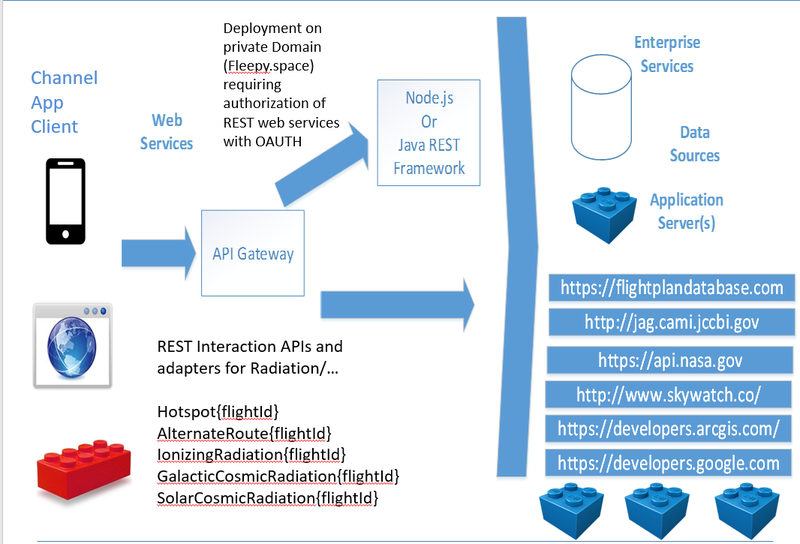
The Problem:
•Exposures to ionizing radiation represent real health hazards to all flight travellers
•Prolonged ionizing radiation exposures may lead to biological effects such as: damage of immunization system, cancer, and hereditary effects
•In 2016, there were over 3 billion flight passengers (crews not included)
•Flight attendants spend on average 1400 hours in the air per year and pilots no more that 1000 hours per year
•How do we ensure ionizing radiation exposures for all flight travellers are within the established dose limits?
The gWaves team is actually a real life family that shares a passion about software engineering.
Vincent (20), based in Waterloo, has completed his first year of university at University of Waterloo in Software Engineering (Coop), and is currently looking for a summer coop work term. Johanne and Johnny are both seasoned professional software engineers / system architects working in National Security & Defence industry in Ottawa.
“The NASA Space App Challenge allows us to get some hands-on experience with microservices and APIs – a natural evolution of the SOA architecture. We bravely put ourself out of our typical zone of comfort to gain deeper understanding of the API economy that is blooming. Despite the hardship, a very good sense of humour and self-derision have helped the team to bring together its very diverse expertise and create a WARM prototype.”
The Web-based Application Radiation Manager (WARM) is a microservice that calculates and visualizes the radiation exposure for an actual or hypothetical polar, or near-polar flight.
SpaceApps is a NASA incubator innovation program.